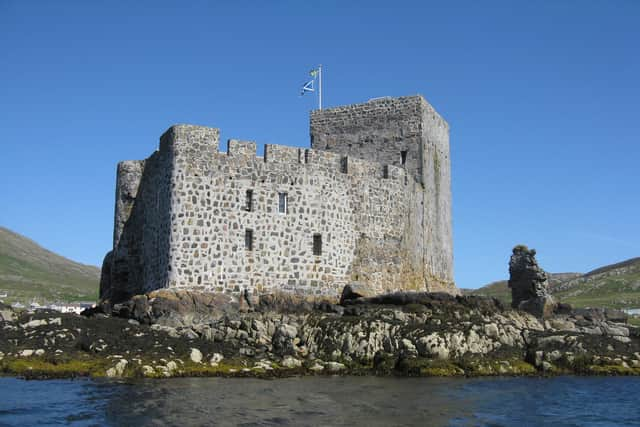Gaelic and English to get equal status at Scotland’s historic sites
Historic Environment Scotland has published its draft Gaelic Plan, which seeks to widen the use of the language across the organisation over the next three years while promoting the impact Gaelic language and culture has had on Scotland’s history.
Increased use of Gaelic-speaking staff, apprentices and volunteers is proposed as well as a new approach to the language of HES branding, logos and signs.
Advertisement
Hide AdAdvertisement
Hide AdGaelic is used widely by the organisation at present, both in publications and at sites such as Arnol Blackhouses on Lewis and Kisimul Castle on Barra, but the new plans will make the language more prominent in the way HES is presented to the public.


Under the proposals, Gaelic and English will be given “equal prominence” in the organisation’s logos and branding “at the first opportunity”, with key signs to be written in both languages when the time comes for them to be renewed.
Catriona Morrison, Gaelic language policy manager, said of the plan: “This is an ambitious plan, which will recognise and celebrate Gaelic’s important and valuable contribution to Scotland’s historic environment.”
Gaelic-speaking staff working with visitors and at receptions will be encouraged to use Gaelic phrases and greetings in person, on the phone or in emails, with language training to be offered to employees if they want it.
Meanwhile, public meetings will be held bilingually if the event relates to Gaelic or if 20 per cent of the population in the area where the meeting is held speaks the language.
Corporate publications will continue to be published in Gaelic and English “when it is valuable and economically viable”, with professional translators and proof-readers employed for larger pieces of work. HES will continue to take advice from Ainmean-Àite na h-Alba (AÀA), the national authority on Gaelic place-names.
This spring, HES will review all its Gaelic interpretation – from information panels to guidebooks, gifts on sale in its shops and archives – to further improve how the language is used.
The historic environment will also be used as the backdrop for further education and learning and build on projects such as Sgrìobh is Aithris (Write and Recite), which encouraged young people to write stories in Gaelic based on their favourite places. The climate crisis, as expressed in Gaelic, will be another focus of the plan.
Advertisement
Hide AdAdvertisement
Hide AdBoth the public and interested organisations are being encouraged to take part in a consultation on the HES proposals and shape the way Gaelic is used.
Ms Morrison said: “We hope to hear from as many people as possible – from Gaelic speakers to those who have an interest in the language or people who would like to learn more about Gaelic language and culture in the future. By sharing your views, your feedback will shape our next Gaelic Language Plan, which, in turn, will help us to safeguard and promote Gaelic language and culture to national and international audiences.”
Latest available official figures on Gaelic use in Scotland dates from the 2011 census, when 87,056 people could speak, read or understand Gaelic. Of these 58,000 people were speakers – 1.1 per cent of the total population. Meanwhile, just over 3,800 pupils were in Gaelic-medium primary education during 2020/21.
Comments
Want to join the conversation? Please or to comment on this article.